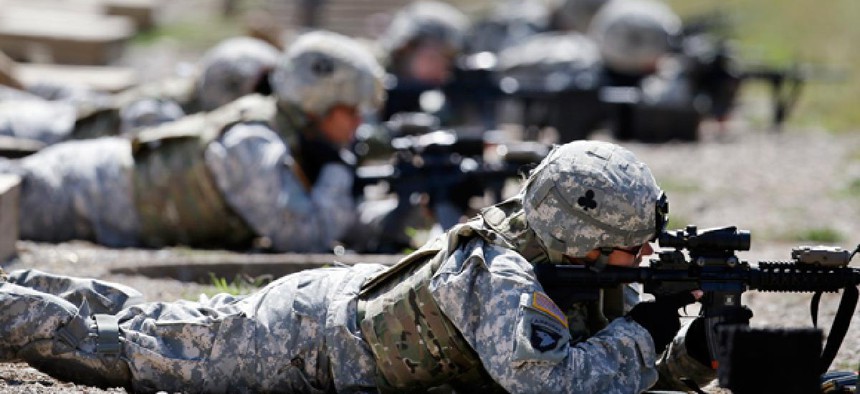
Female soldiers from the 1st Brigade Combat Team, 101st Airborne Division train on a firing range in Fort Campbell, Ky. Mark Humphrey/AP File Photo
What the debate over women-in-combat looked like in 1990
A rundown of the arguments 20 years ago.
Defense Secretary Leon Panetta has decided to lift the U.S. military's ban on women in combat. This puts an end to a decades-old controversy about the role of women in the military. Back in 1990, Charles C. Moscos—a late Northwestern University professor who, among other things, helped draft the military's now-defunct "Don't Ask, Don't Tell" policy—described how servicemembers felt about the combat ban, in a piece called "Army Women." Here's the relevant excerpt:
The various arguments for and against women in combat are complex, and the issues involved are not subject to easy empirical resolution. Whether the propensity of most males to be more aggressive than most females is due mainly to body chemistry or to cultural conditioning is a matter of controversy; so is whether male bonding is chemical or cultural. There are social realities that need be considered, however. We should not forget, for example, that combat troops live, bathe, and sleep together for days and weeks on end. No institution in American society forces men and women into such unrelentingly close contact. That women could be killed or captured in war is a specter raised by those who oppose letting women into combat units. Is this really an issue? Female police officers have died in the line of duty without raising any particular outcry. On the touchy matter of prisoners of war, we have seen at least a symbolic change. In 1988 President Ronald Reagan signed an executive order revising the Code of Conduct for POWs. What formerly began with "I am an American fighting man" was changed to the gender-neutral and less bellicose "I am an American."
NEXT STORY: The ban on women in combat will officially end






